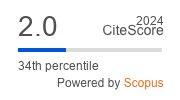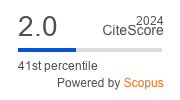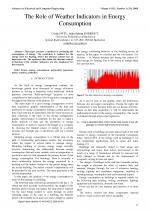| 1/2008 - 3 |
The Role of Weather Indicators in Energy ConsumptionNITU, C. |
| Extra paper information in |
| Click to see author's profile in |
| Download PDF |
Author keywords
energy consumption, polynomial regression, indoor comfort, prediction
References keywords
No relevant keywords could be extracted from the references.
About this article
Date of Publication: 2008-04-02
Volume 8, Issue 1, Year 2008, On page(s): 17 - 20
ISSN: 1582-7445, e-ISSN: 1844-7600
Digital Object Identifier: 10.4316/AECE.2008.01003
Web of Science Accession Number: 000259903500003
SCOPUS ID: 77955594048
Abstract
This paper presents a method for predicting the consumption of energy. The prediction is realized for the energy used for heating, where the thermal comfort has an important role. The equations that define the thermal comfort in function of the weather indicators are also mandatory for the research. |
| References | | | Cited By «-- Click to see who has cited this paper |
| [1] B. L. Capehart, L. C. Capehart, "Web based energy information and control system: Case Studies and Applications", CRC Press, 2005.
[2] Intelligent buildings - learning modules [Online] Available: Temporary on-line reference link removed - see the PDF document [3] Memarzadeh, F., A. Manning, "Thermal Comfort, Uniformity, and Ventilation Effectiveness in Patient Rooms: Performance Assessment Using Ventilation Indices, In ASHRAE Transaction", 2000. [4] C. Nitu, V. F. Krapivin, A. Bruno, "Modelarea proceselor in ecologie", Ed. Printech, Bucuresti, 2000. [5] K. F. Geoffrey, K. W. Kelvin, "Predicting electricity energy consumption: A comparison of regression analysis, decision tree and neural networks", 2007. [CrossRef] [Web of Science Times Cited 674] [SCOPUS Times Cited 818] [6] W. Popinski, "Consistency of trigonometric and polynomial regression estimation", Warsaw, Applied Mathematics, 1998. Web of Science® Citations for all references: 674 TCR SCOPUS® Citations for all references: 818 TCR Web of Science® Average Citations per reference: 112 ACR SCOPUS® Average Citations per reference: 136 ACR TCR = Total Citations for References / ACR = Average Citations per Reference We introduced in 2010 - for the first time in scientific publishing, the term "References Weight", as a quantitative indication of the quality ... Read more Citations for references updated on 2025-06-03 14:23 in 26 seconds. Note1: Web of Science® is a registered trademark of Clarivate Analytics. Note2: SCOPUS® is a registered trademark of Elsevier B.V. Disclaimer: All queries to the respective databases were made by using the DOI record of every reference (where available). Due to technical problems beyond our control, the information is not always accurate. Please use the CrossRef link to visit the respective publisher site. |
Faculty of Electrical Engineering and Computer Science
Stefan cel Mare University of Suceava, Romania
All rights reserved: Advances in Electrical and Computer Engineering is a registered trademark of the Stefan cel Mare University of Suceava. No part of this publication may be reproduced, stored in a retrieval system, photocopied, recorded or archived, without the written permission from the Editor. When authors submit their papers for publication, they agree that the copyright for their article be transferred to the Faculty of Electrical Engineering and Computer Science, Stefan cel Mare University of Suceava, Romania, if and only if the articles are accepted for publication. The copyright covers the exclusive rights to reproduce and distribute the article, including reprints and translations.
Permission for other use: The copyright owner's consent does not extend to copying for general distribution, for promotion, for creating new works, or for resale. Specific written permission must be obtained from the Editor for such copying. Direct linking to files hosted on this website is strictly prohibited.
Disclaimer: Whilst every effort is made by the publishers and editorial board to see that no inaccurate or misleading data, opinions or statements appear in this journal, they wish to make it clear that all information and opinions formulated in the articles, as well as linguistic accuracy, are the sole responsibility of the author.



